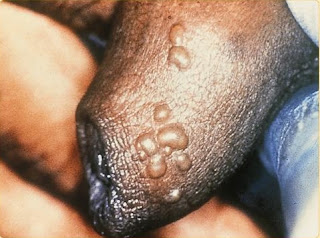It is the bacterial organism ‘Treponema pallidum’ the reason why Syphilis exists. The spiral-shaped microscopic pest is responsible for giving a painless chancre ulcer that is known for one of its significant symptoms of syphilis. It is a common diagnosis observed by STD specialists from individuals who have the disease. The details are widely discussed in the following points about syphilis symptoms.
1. How it is transferred
The usual cause of the transmission of the bacteria is through an open wound. For instance, when the person who has incubated the disease during the primary stages of syphilis has contact with another person who happens to have small cuts on the mucous membrane, that person will definitely acquire the bacteria and be victimized of the syphilis symptoms for the following weeks. Vaginal or anal contact is also possible to transfer the disease. Pregnant moms who may have exhibit syphilis symptoms in women can spread the bacteria to her unborn baby.
 2. Risk factors
2. Risk factorsSince the disease is prevalent among bisexual or gay men, they should practice the importance of safe sex. Multiple partners place a high risks than monogamous couple. HIV patients are also unprotected from syphilis symptoms as well as persons with small cuts or abrasion near the mouth or genital areas.
3. Primary symptoms
Three weeks after the exposure from an infected individual, the painless ulcer called chancre develops and remains dormant around the anus, vagina in women or penis in men. However, if no treatment precedes the symptom, the ulcer heals within the 6-week span period.
4. Secondary stage
In secondary stage, syphilis symptoms in men and women are considered contagious. About 21 to 42 days after chancres are seen, the person may exhibit white patches in the oral cavity, swollen lymph nodes, fever, red patches than migrates to the trunk, mouth or genitalia, wart spots around the anus.
5. Latent stage of syphilis
The latent stage of syphilis symptoms in women especially in men may extend for several years if no treatment is given. However, no symptoms can be felt until the infected individual undergoes diagnostic tests to determine the extent of the disease.
6. Last phase of syphilis (Tertiary)
Late or tertiary phase of the disease is usually the cause of neglecting the outbreak of the previous stages of syphilis symptoms. It affects major organs of the body because the bacteria may settle around the system where it multiplies and accumulate. The virulent bacteria can now damage your liver, joints, heart and nerves.
7. Complications
Complications arise from the late stage of syphilis symptoms may lead to meningitis if the disease reaches the spine and brain system, deafness, blindness and heart damage especially the aortic vessel. Pregnant moms who are not aware that they carry the disease may reach the unborn child and later manifest congenital syphilis. Facial deviations like teeth deformities and deafness are commonly seen with babies born with congenital syphilis and thus, further treatment is necessary to eradicate the symptoms of syphilis.



